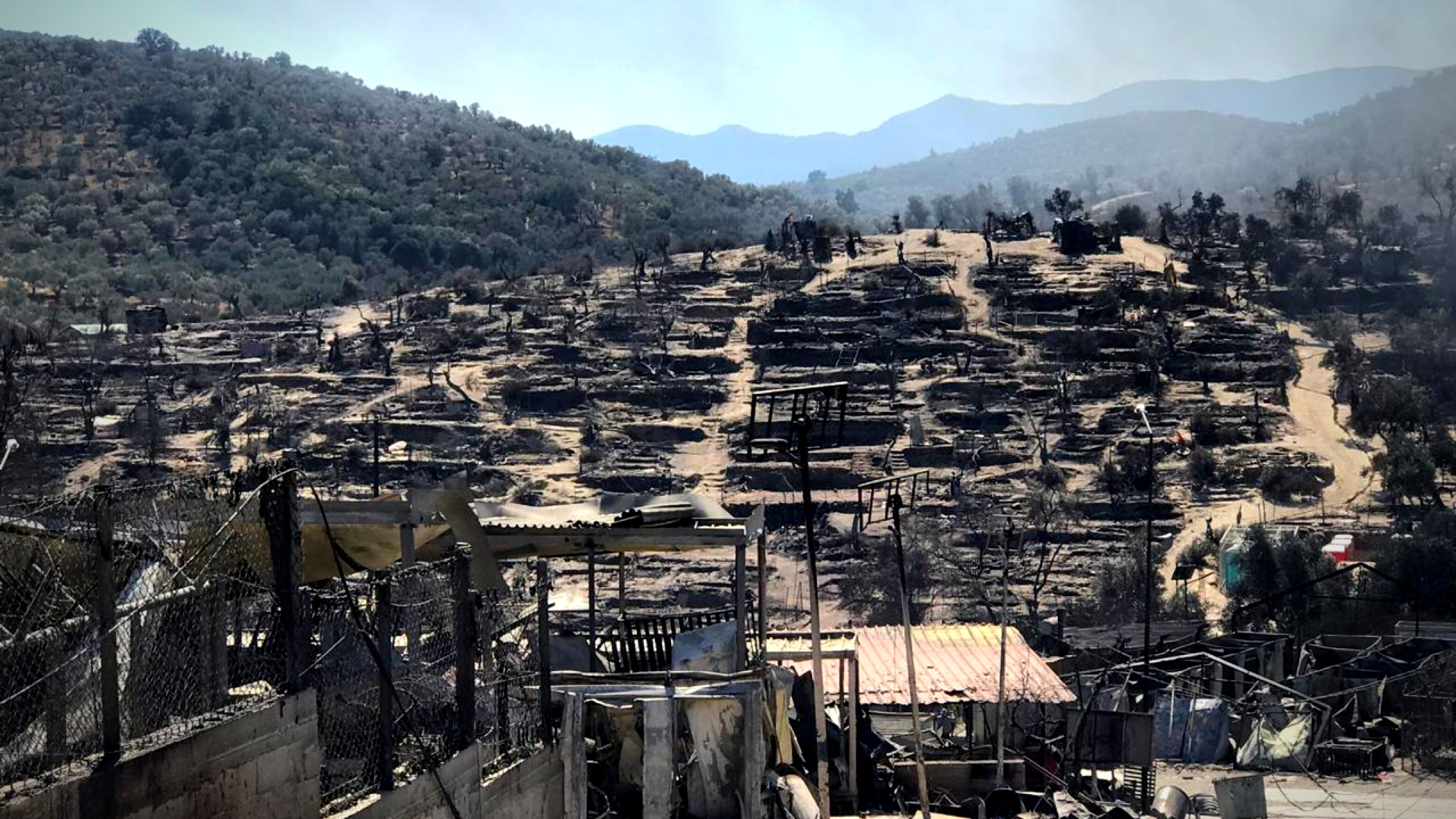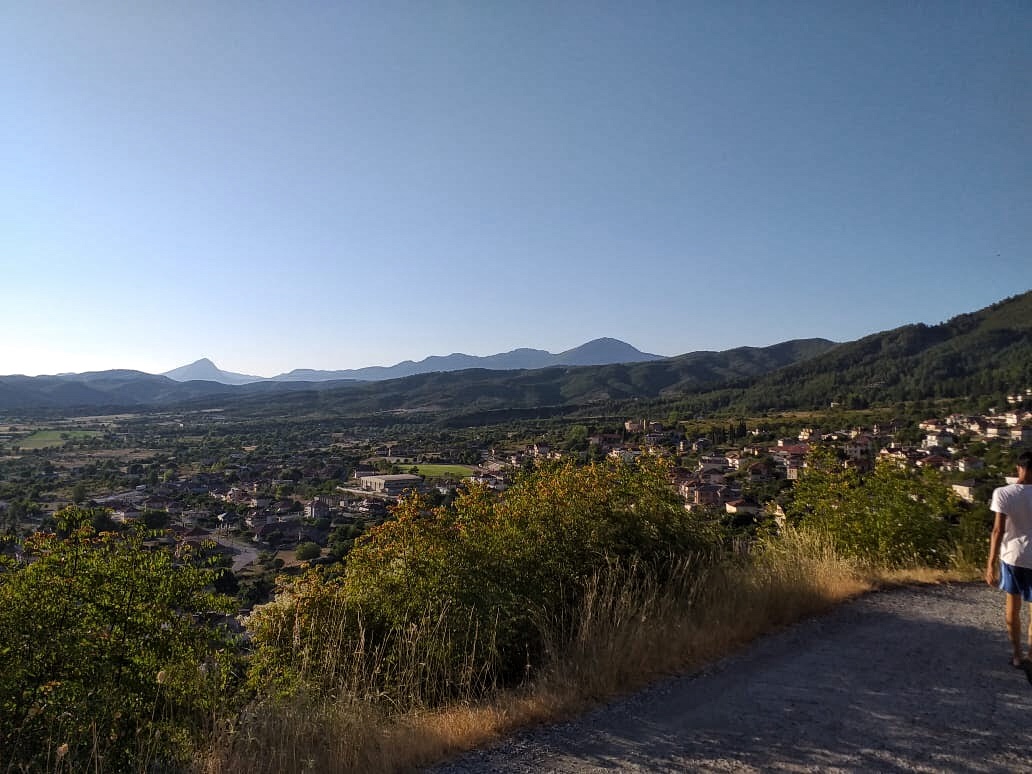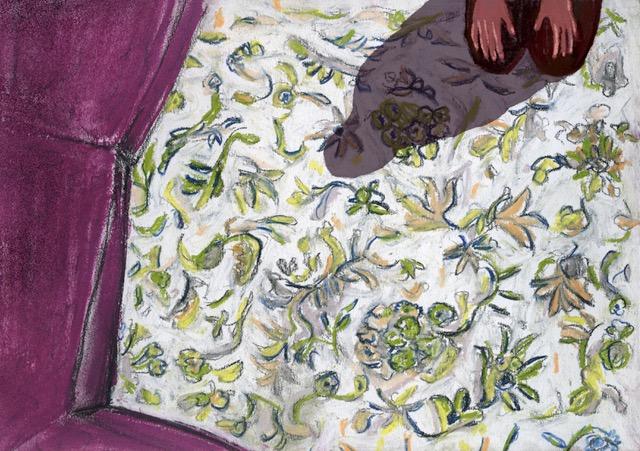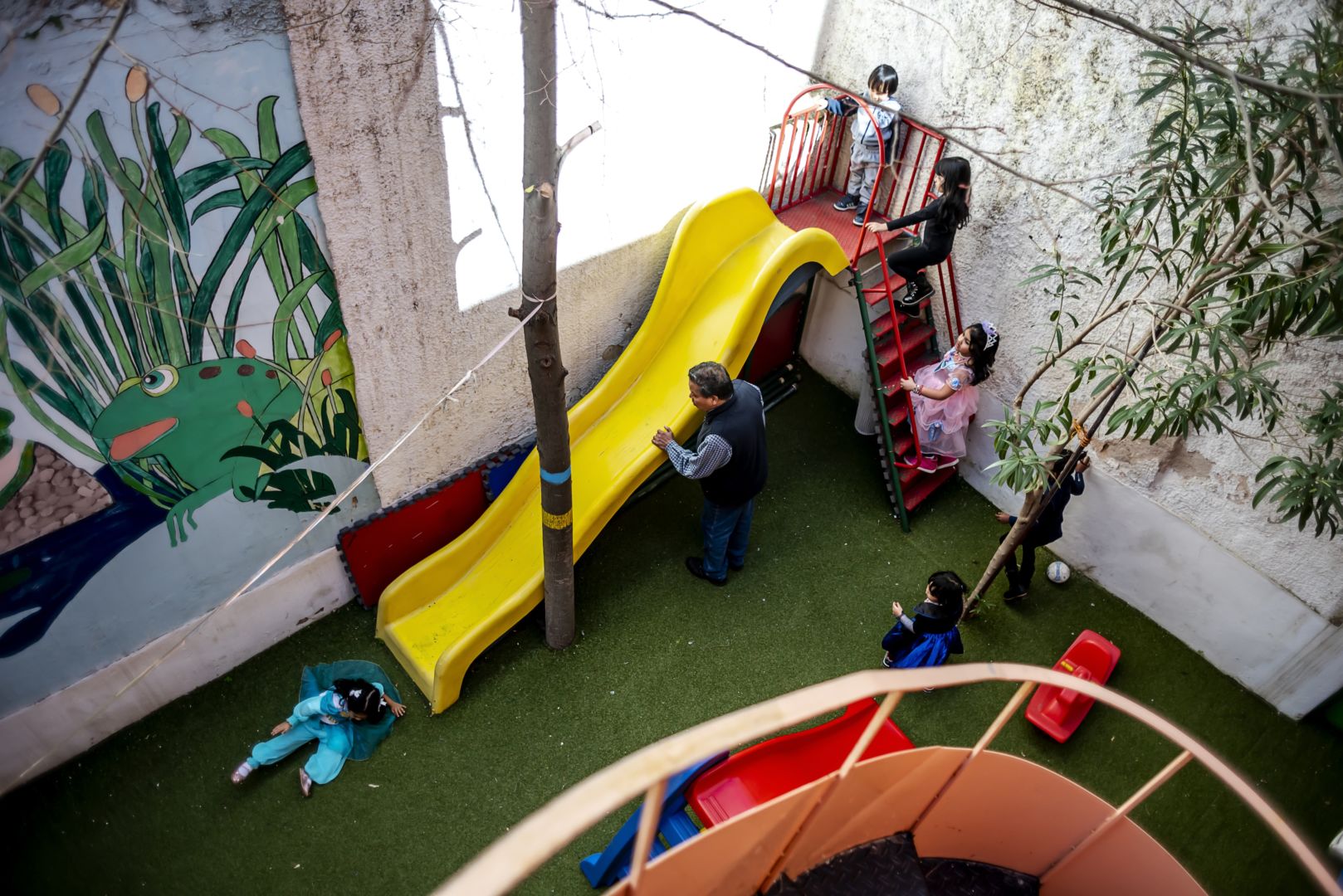On September 9, 2020, at 9:00pm, a massive fire surrounded Moria camp on Lesvos where about 13,000 refugees were living, destroying the worst and biggest refugee camp in Europe.
The fire started in Mandala, a section within the facility, where the government built an isolation center for those who had been in contact with people infected by coronavirus. The fire at Moria camp and the displacement of thousands of refugees was all over the news. And immediately after, rumors started to spread rapidly through word of mouth and social media.
Fire spreading along with rumors
Who was behind the fire?
People were talking about a joint plan between locals and refugees to burn the camp down. Samiullah, a 28-year-old man from Afghanistan, said that while part of the camp was already burning, he witnessed a group of locals circling the camp on motorbikes holding flaming torches and lighting fires in places, but he was too far away to be able to record it on video, as evidence .
Others believed that although Germany is ready to accept refugees, it’s the Greek government that prevents them from continuing their journey.

A few days earlier, protesters placed 13,000 chairs outside the German parliament in Berlin, calling for the overcrowded refugee camps in Greek islands to be shut down and Germany to take the responsibility of us, refugees. Τhis event rekindled the hope of the people who have been stuck here for years, waiting for an outcome on their claim for asylum, with no anticipation for their future.
It was also believed that the Greek government is using coronavirus as an excuse to implement their plans to create “closed” camps for asylum seekers and force everyone into isolation.
The night “hell” burned
“It was a terrible night that I will never forget,” Khalid, a 37-year-old Afghan asylum seeker, who lived in Moria with his wife and two children, says of the night of the fire. “I still have nightmares of gunfire and bomb explosions from when we were living in Afghanistan, and this fire was like a flashback that made me suffer all over again.”
As the fire spread, thousands of people were running from all directions, trying to escape the flames coming in waves, burning everything to the ground.
Behind the loud noise caused by the explosions you could distinguish mixed voices of men shouting, trying to help others get out, and babies crying in their mothers’ arms.
People took only the essentials with them and others left their tents half-dressed or in bare feet trying to escape as quickly as possible. “The night that the fire started we were sleeping when suddenly I heard people shouting,” Ahmad, a 22-year-old Afghan asylum seeker says. “I rushed out of the tent to see what’s going on. There was smoke and flames everywhere. I woke up my wife and our daughter and we left the tent only with our legal documents, leaving all of our stuff behind.”

Τhe evacuation of the camp took place without the presence of police or firefighters. There was only one option for the people who fled the flames: to follow the main street towards the city of Mytilene. Crowds of people flooded the surrounding areas of the burning camp and gradually ended up on the street that connects Moria camp and Kara Tepe. From there they couldn’t move further as groups of locals carrying sticks and other objects blocked their way to the city.
The days after
Next morning, when Moria had turned into ashes, a few people went back looking through the debris for their possessions, water and items they could use to support the new makeshift structures that had already started to emerge on the asphalt. There I met Ahmad Yusuf, a 25-year-old man from Afghanistan. “I am looking for bottles of water that have survived the fire, and other useful stuff,” he says.
The shelter looked like a molten mass. Here and there you saw iron skeletons of structures standing on a completely ruined landscape. Some people managed to dig out blankets and other types of clothing from the ashes, to use for keeping their children warm at night, when temperatures drop and make the situation even worse.
Thousands of people were queuing again, like they did at Moria, for just a tomato, a piece of cheese and a slice of bread. The food was not enough for everyone and people went back to their tents with empty hands.
Some families proved luckier than others, and had relatives living in town, who were buying food, medicine and sanitary items to bring to them.

Some families proved luckier than others, and had relatives living in town, who were buying food, medicine and sanitary items to bring to them.
At the same time, many local shops and restaurants did not allow refugees in. Supermarkets in Panagiouda village stopped selling goods to refugees and even in cases where refugees were allowed to shop, local customers would then show their disappointment by not shopping at those stores.
Tensions rose between local Greeks and refugees, with the latter reporting insults and aggressive behaviors against them. Refugees talked about incidents where locals called them malaka (asshole) and shouted at them “Go back to your country and leave our islands.” People were frustrated, exhausted and they were confused about what to do and where to go.
“We need freedom, not food”
On the following days, people who had been left on the street for four days, went to a protest using the slogan: AZAADI, “freedom” in Farsi and Dari. Many journalists, photographers, aid workers and NGO staff were among the refugees.
Police patrols and riot units blocked the road from Kara Tepe to Mytilene in order to prevent the waves of refugees from entering the city. The refugees were just stuck on the main road from Kara Tepe to Moria camp with no water, food and other basic needs.

The weather was extremely hot and they were exposed to the scorching sun. On the second day of protests, the police responded by spraying teargas into the crowd. Children held signs in their hands, with azaadi and freedom slogans such as “we don’t need food and water, we just need freedom.”
“We came here to live in peace, to go to school and make friends. But, since I arrived I have been witnessing just hatred and insult,” says 15-year-old Rohim Ahmad who lived at Moria with his family. “They even like stray dogs better than us. Europe made me think of what my grandfather used to describe as hell.”
The new Moria
A new tent camp has been set up at a former military firing range in Kara Tepe. Although the authorities announced that this place would be temporary to just relocate the displaced people of Moria camp, refugees are concerned about being detained there for years.
The new “temporary” camp is located next to the sea, exposed to very heavy winds and high humidity. It was announced that the Greek Asylum Service would resume Skype interviews on Monday, September 21 and priority would be given to asylum seekers inside the new camp, and not those who chose to remain on the street. This put a lot of pressure on people who cannot stay in limbo anymore and they gradually moved into the new camp with the hope that their cases will be finally examined and they will be able to move on.

“We fled our home country to seek a safe place to live and build a better future for our kids. But instead, we found once again ourselves trapped in a jungle enduring winter in summer tents.” Khalid says. “We’re building a wooden structure trying to give ourselves the illusion that we live in a house. Sometimes I think that I made a huge mistake that I sold all my belongings and came here. I would prefer to die in my country with dignity and having an identity. Here we are treated like animals. We don’t count as human beings.”
People live now inside the camp deprived of electricity, food and water. They live just under a tent with no pallets beneath. The portable toilets that have been installed are not enough and so dirty and people have to stand in line for hours in order to use them. Women have to wash themselves in the sea in public and this makes them feel ashamed.
Single men are separated from the families and around 150 single men live in a big tent. The big tents are surrounded by barbed wire. They live like animals in one big tent. Shamsullah, a 29-year-old asylum seeker from Afghanistan said “We are around 150 single men in one big tent here. I am afraid if any fights break out in here there will be casualties.”
People had named Moria camp the fifth level of hell. Now they call “Moria 2.0” the seventh level of hell.









